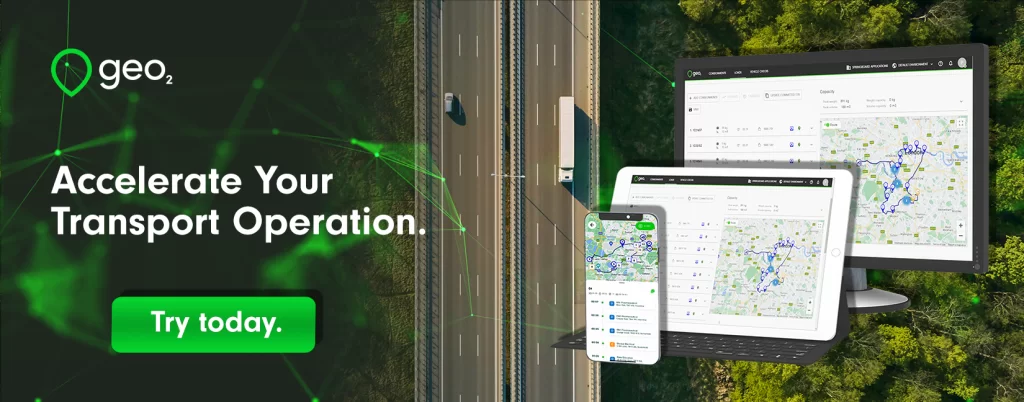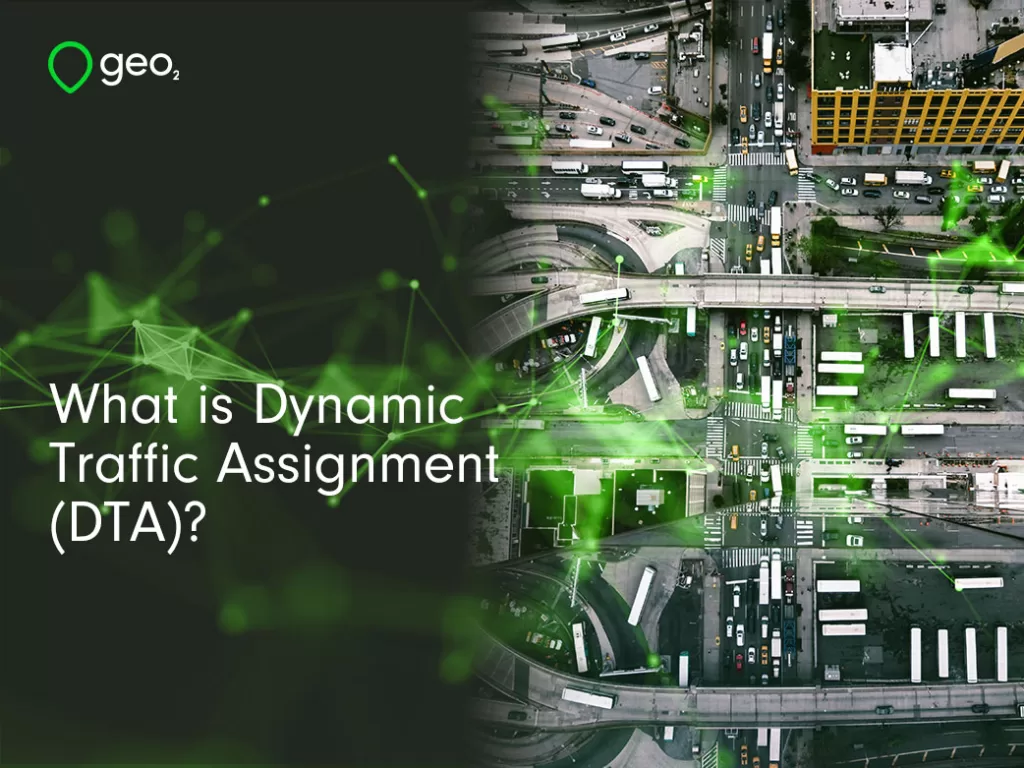
What is Dynamic Traffic Assignment (DTA)?
As urban areas continue to grow, it becomes increasingly challenging to manage traffic efficiently. This is the case not just for city planners, but also for businesses that rely on making timely deliveries by quickly navigating through traffic jams, diversions and accidents.
Here, we look at a key modelling aspect that helps maintain efficient traffic flow on our roads – dynamic traffic assignment. We explain the significance of dynamic traffic assignment and how it contributes to the potential for more efficient routing, reduced delays – and ultimately, faster parcel deliveries.
Need help choosing a TMS?
Download the Free Guide Now.
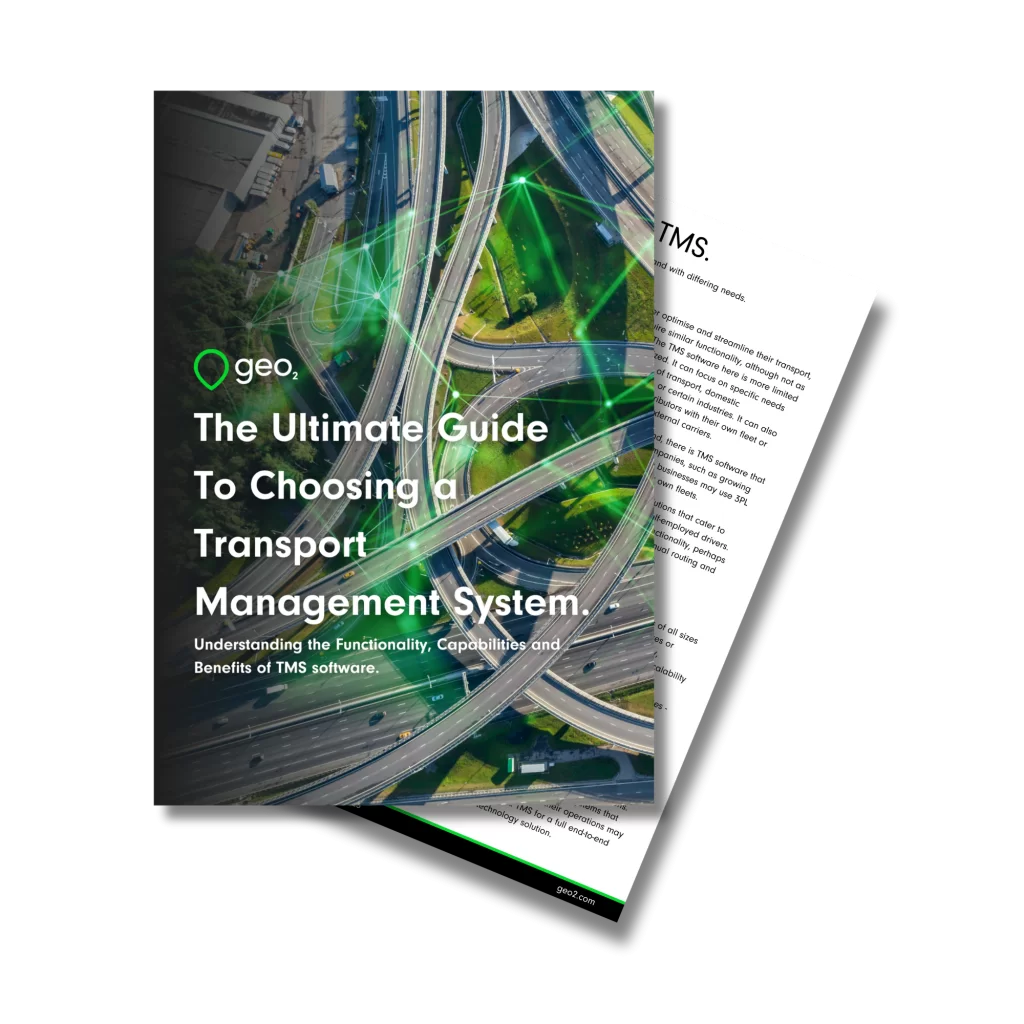
Table of Contents.
What is Traffic Assignment?
Before we get onto dynamic traffic assignment, it’s useful to understand what traffic assignment is in general.
Traffic assignment is a method of modelling that forecasts traffic expected in a particular area, like a city or a section of motorway. It can be applied to both foot and vehicular traffic and plays a key role in urban planning and traffic engineering projects.
Traffic assignment helps planners to predict traffic flow on road networks. The modelling is used to inform the design and optimisation of road layouts, signalling systems and the general development of infrastructure. By understanding and anticipating patterns of traffic flow, planners can reduce congestion, accelerate travel times and improve travel overall.
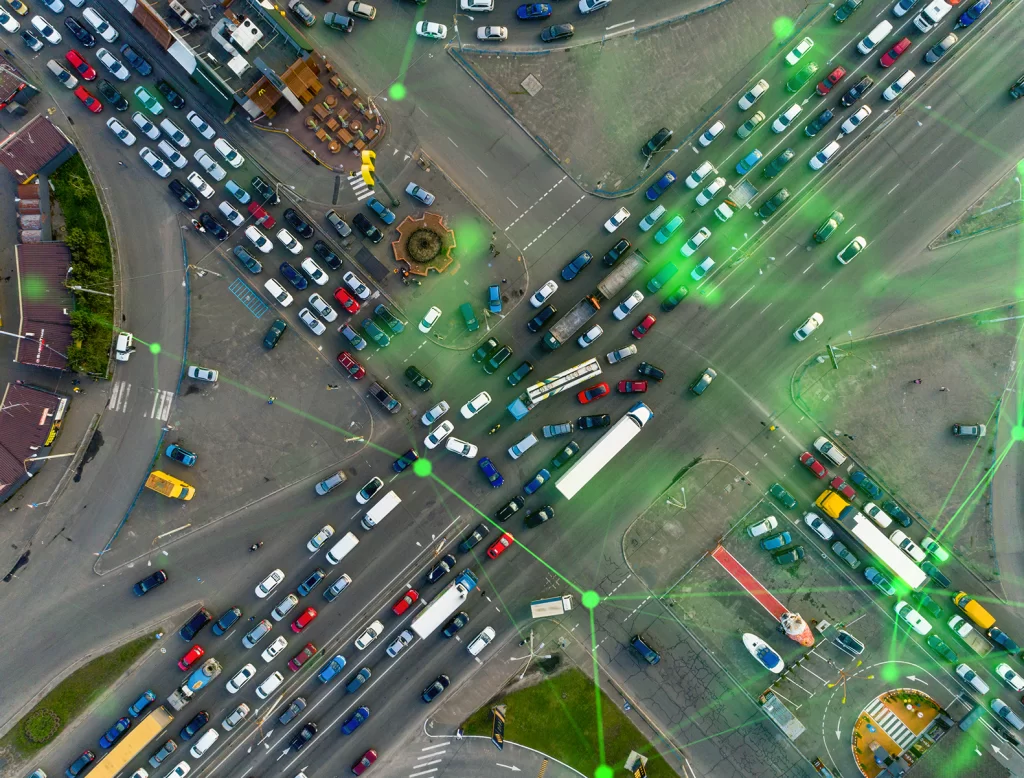
Table of Contents.
What is Dynamic Traffic Assignment (DTA)?
Dynamic traffic assignment is an advanced method of traffic assignment. Instead of modelling based on historical or static data, dynamic traffic assignment uses current traffic conditions to make real-time assessments and predictions.
Using dynamic traffic assignment involves collecting live traffic information, such as vehicle speeds, traffic density and information about reported incidents. The data is compiled from various sources, such as surveillance cameras and sensors, allied with locational and GPS devices. Because it uses real-time information, dynamic traffic assignment provides an accurate reflection of current road conditions.
Its dynamic nature helps with managing traffic congestion. It allows a rapid response to changes in traffic patterns, roadworks, rush hour congestion or when there are unexpected incidents. Using dynamic traffic assignment, predictions and recommendations can quickly be assessed. Traffic controllers can then take the necessary action to help ease congestion and roadblocks.
Dynamic traffic assignment also has predictive capabilities. Using advanced algorithms and modelling techniques – and based on the current traffic trends – it can forecast future traffic scenarios. This helps inform decisions that can proactively manage traffic, by providing alternative routing choices and traffic distributions that will prevent serious congestion before it occurs.
Dynamic Traffic Assignment (DTA) in Action.
Singapore’s Intelligent Transport System (ITS) uses smart transport technologies and real-time traffic management.
The city state’s ITS uses systems and inputs such as Junction Eyes (J-Eyes), Green Link Determining System (GLIDE), webcams and Expressway Monitoring Advisory Systems (EMAS), which employ the core concepts of dynamic traffic assignment. These include real-time data analysis, adaptability to changing traffic conditions and predictive capabilities. For example, traffic lights can be adjusted to let vehicles continue to pass or to allow pedestrians to cross the road. This is detected live and adjustments are made dynamically according to demand.
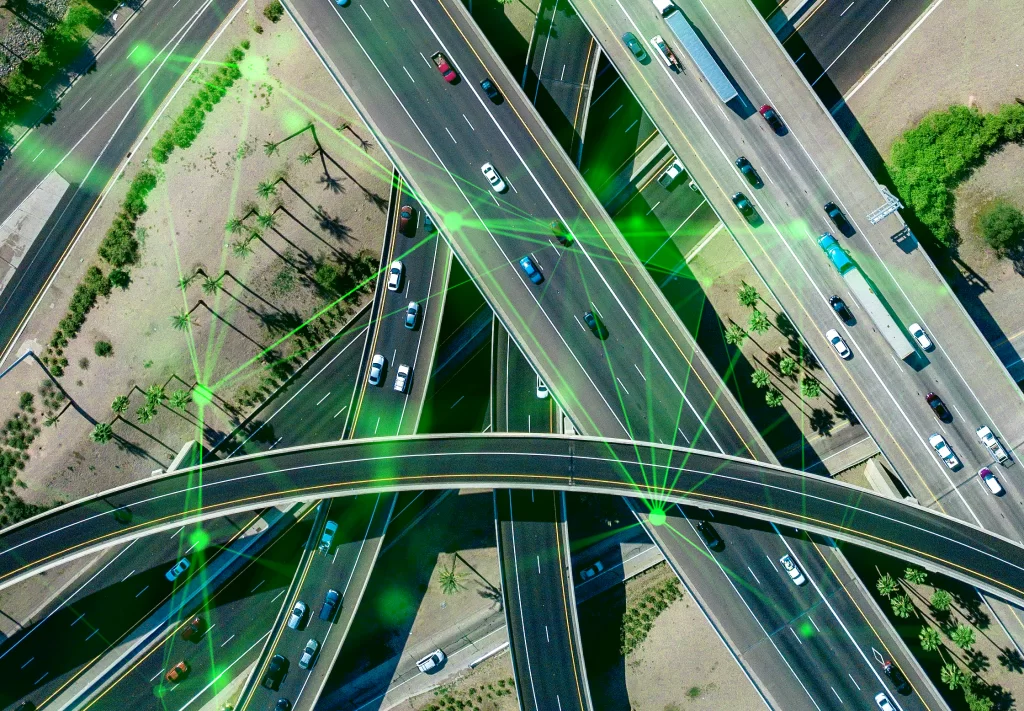
Comparing Static Traffic Assignment and Dynamic Traffic Assignment (DTA)
Static traffic assignment is another type of modelling. It provides a broad, averaged-out view of traffic that is suitable for planning and long-term predictions. Dynamic traffic assignment, on the other hand, gives a more detailed, moment-to-moment picture, which is essential for real-time traffic management and short-term predictions.
Static traffic assignment operates over a longer, fixed period, such as a peak rush hour, and uses average conditions. Congestion is modelled in a way whereby travel time on a section of road increases with the volume of traffic. It assumes that there is steady, constant flow of traffic and that vehicles are travelling at the same speeds.
A static traffic assignment model has capacity limitations. It doesn’t cap traffic volume according to the physical capacity of the road. So, it cannot model congestion as realistically as with dynamic traffic assignment. For example, if the inflow of vehicles entering is greater than the outflow of vehicles leaving, congestion increases, slowing traffic speeds. Static traffic assignment does not model this fundamental relationship between speed, flow and density in traffic.
Benefits of Dynamic Traffic Assignment (DTA).
Dynamic traffic assignment offers several benefits in traffic management and planning.
Because it is based on live data, traffic systems are able to adapt in real-time to changing conditions, such as congestion, accidents or road closures. Signal timing can be adjusted according to the live situation, improving the efficiency of the overall road network.
By responding to current traffic situations, dynamic traffic assignment enhances the flow of traffic when it’s needed. With smoother traffic flow, congestion is reduced and travel times are shorter.
Dynamic traffic assignment is more accurate than some other methods. The use of real-time data means that traffic forecasting is more accurate. This improves decision-making for traffic management and urban planning.
Geo2 Transport Mangement System uses live traffic to dynamically optimize delivery routes. Book a free consultation to find out more today.
